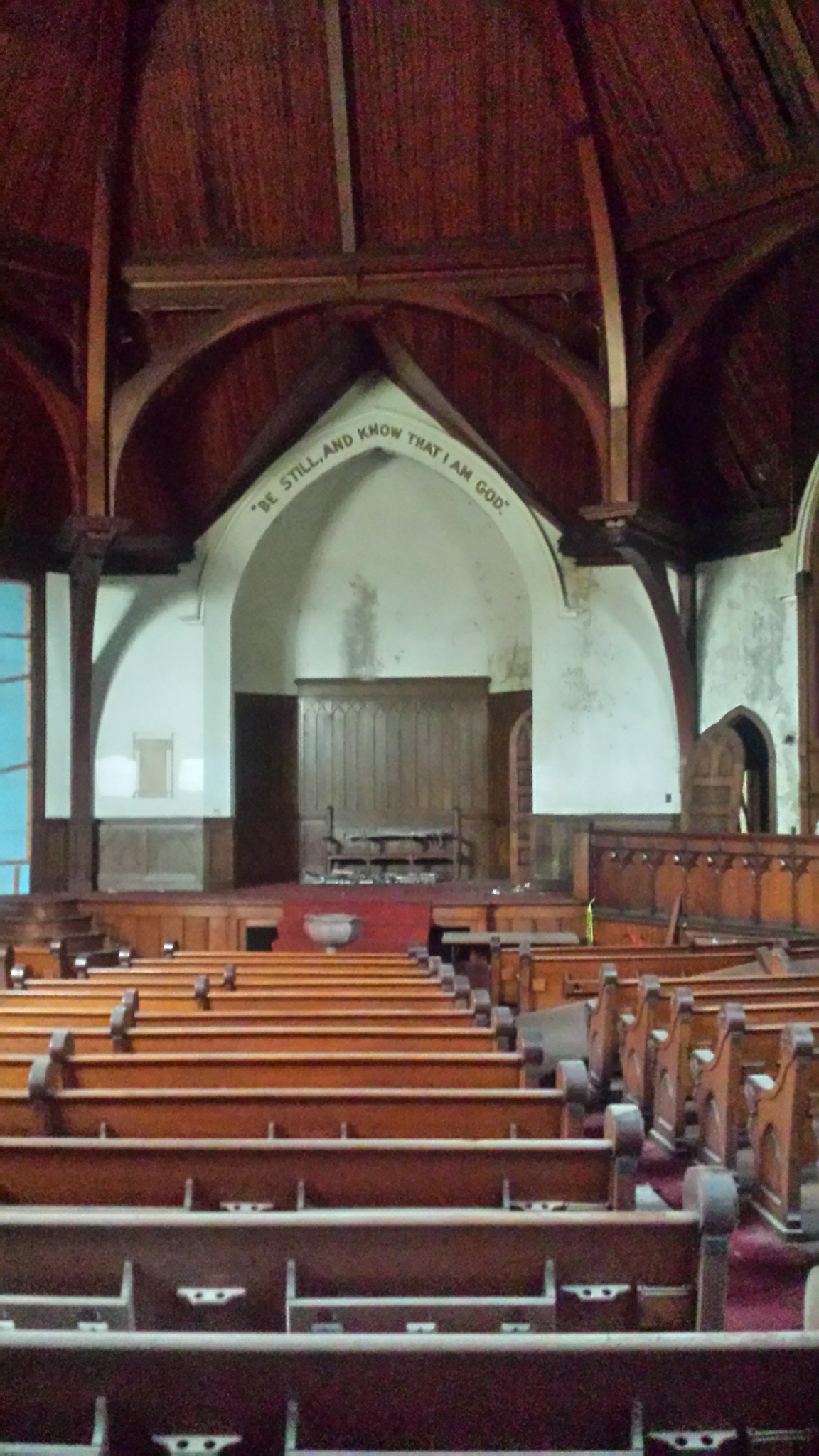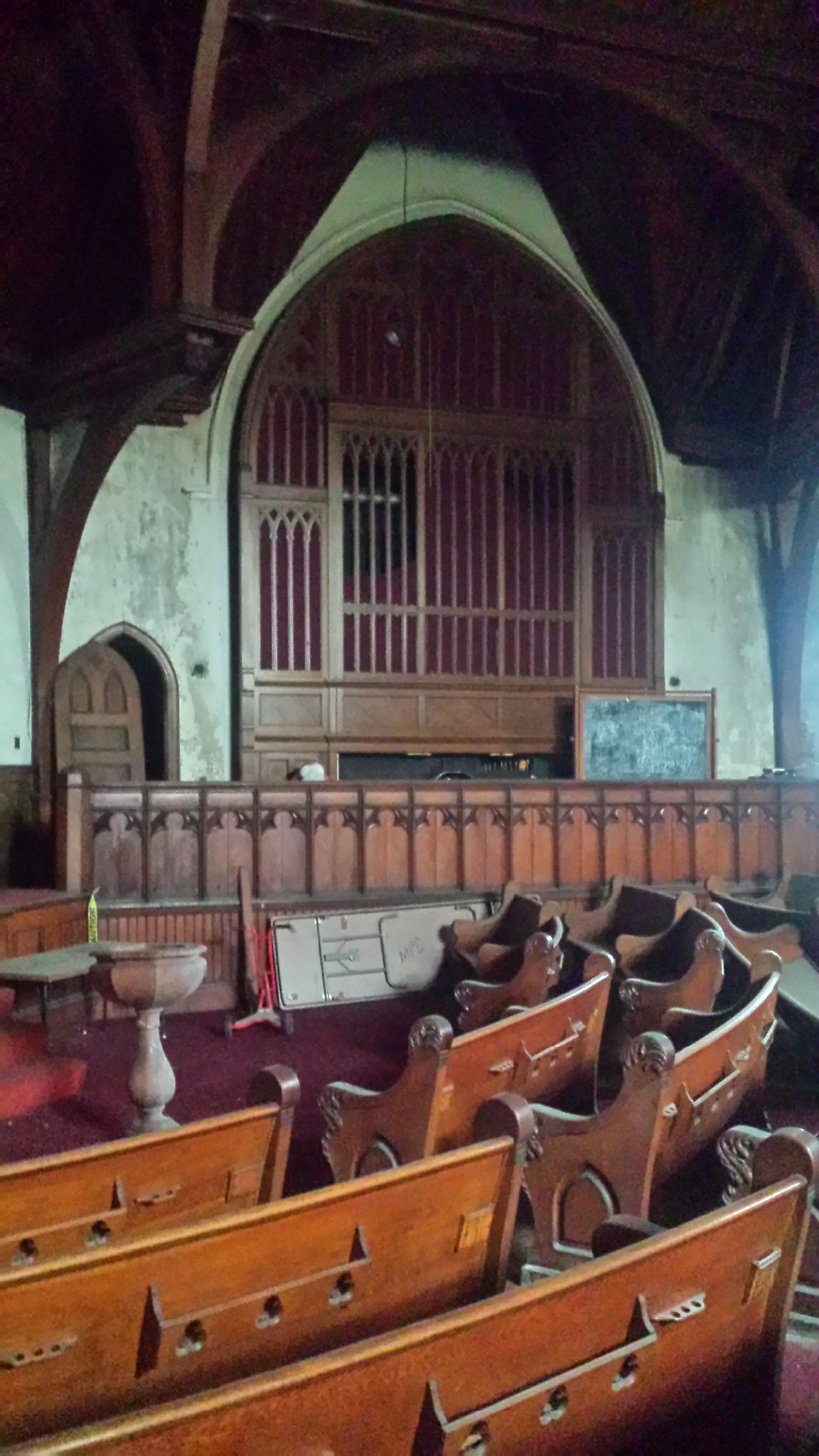This week’s post in honor of National Preservation Month talks about the tool of asset mapping and how its being used to re-imagine a new life for a local landmark in Chester, Delaware County.
Hopes are high in the City of Chester as civic leaders convened on the evening of Thursday, May 4th to plan for the future of the community’s historic Third Presbyterian Church through asset mapping. Located at 9th and Potter Streets, this unusual stone Gothic Revival church is now owned by the Chester Historical Preservation Committee (CHPC), which hopes to rehabilitate the building and return it to active community use in a way that catalyzes the revitalization of Chester’s Eastside.

Former Third Presbyterian Church, Chester, Delaware County. Photo by Susan Rowe.
A Quick Look at Third Presbyterian’s History
Though not listed on the National Register or any local equivalent, Chester’s Third Presbyterian Church is a landmark in its own right. Designed by prolific architect Isaac Pursell (1853-1910), the church was completed in 1896 for the congregation of Third Presbyterian Church. Founded in 1872 as a mission of the now defunct First Presbyterian Church, the Third Presbyterian Church congregation had previously been located in a building at the nearby intersection of 12th and Upland Streets.
The congregation flourished during the first half of the twentieth century, and, like many congregations of all denominations, peaked at mid-century only to decline as Chester experienced economic and demographic shifts throughout the 1970s and 1980s. Unable to weather this difficult period, the congregation ultimately closed the church’s doors in 1986.

Interior of Third Presbyterian Church, which was built using the Akron Plan for churches.
Chester Eastside Ministries, a Presbytery-affiliated 501(c)(3) that works to better quality of life, was next to occupy the building. Under their tenure, the building’s condition became increasingly critical and eventually learned that the building needed a great deal of capital investment to fix its many structural issues. In 2012, Chester Eastside Ministries moved into a nearby church with an active Episcopal congregation and the Presbytery of Philadelphia prepared to demolish the building.

Third Presbyterian’s choir area and organ.
In early 2015, CHPC purchased the building from the Presbytery of Philadelphia for $1. Because of CHPC’s last minute intervention, the church survives. However, CHPC recognizes that it cannot restore the building to a state of active community use without the buy-in and ongoing support of the community.
What is Asset Mapping?
On Thursday, May 4th, CHPC and the national organization Partners for Sacred Places hosted a community-wide asset mapping event designed to convene stakeholders from varied sectors to collectively share ideas for restoring and reanimating the building. Partners for Sacred Places, founded in 1989, is the only national, non-sectarian, nonprofit organization focused on building the capacity of congregations of historic sacred places to better serve their communities as anchor institutions, nurturing transformation, and shaping vibrant, creative communities.

Asset mapping in action with stakeholders working toward new ideas.
Asset mapping is a collaborative process that gathers the input of a wide circle of leaders who bring their expertise and experience. Participants are invited to identify specific strengths and resources within the community, and then to connect assets in order to realize possibilities that may further a goal or set of goals. In Chester, the goal of this asset mapping exercise was restoring Third Presbyterian Church in a way that benefits all while also catalyzing additional investment in Chester’s Eastside neighborhood.

Asset mapping includes idea and experience sharing in some creative ways.
This event built upon the work achieved through previous asset mapping events, including Chester Made, which had resulted in the creation of a comprehensive Cultural Asset Map for the City.
The event took place at Chester’s City Hall, and garnered participation from many organizations, including representatives from the PA State Historic Preservation Office, Chester City Council, Chester’s Department of Public Affairs, Chester Economic Development Authority, Chester Community Improvement Project, Art on the Avenue of the States, Chester Environmental Partnership, Hidden City Philadelphia, and Crozer Library.
To get involved or to remain up-to-date on this project’s progress, visit chesterpreservation.org.
This week’s post is by guest author Rachel Hildebrandt, Senior Program Manager for Partners for Sacred Places, Philadelphia office. Rachel holds an MS in Historic Preservation from the University of Pennsylvania and a BA in Psychology from Chestnut Hill College. Before beginning work at Partners, she co-authored two books, The Philadelphia Area Architecture of Horace Trumbauer (2009) and Oak Lane, Olney, and Logan (2011), both published by Arcadia Publishing. Rachel continues to write as a freelance contributor for Philadelphia’s Hidden City Daily web magazine.
Leave a Reply